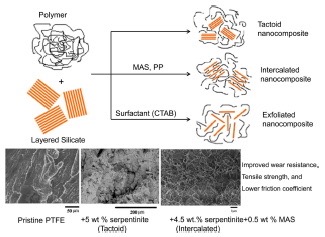Nanocomposites Based on Polytetrafluoroethylene and Ultrahigh Molecular Weight Polyethylene: A Brief Review
Vol. 35, No. 12, pp. 3411-3420, Dec. 2014
 10.5012/bkcs.2014.35.12.3411
10.5012/bkcs.2014.35.12.3411
Tumbnail

Abstract
Statistics
Cumulative Counts from November, 2022
Multiple requests among the same browser session are counted as one view. If you mouse over a chart, the values of data points will be shown.
Multiple requests among the same browser session are counted as one view. If you mouse over a chart, the values of data points will be shown.
|
|
Cite this article
[IEEE Style]
I. V. Kirillina, L. A. Nikiforov, A. A. Okhlopkova, S. A. Sleptsova, C. Yoon, J. Cho, "Nanocomposites Based on Polytetrafluoroethylene and Ultrahigh Molecular Weight Polyethylene: A Brief Review," Bulletin of the Korean Chemical Society, vol. 35, no. 12, pp. 3411-3420, 2014. DOI: 10.5012/bkcs.2014.35.12.3411.
[ACM Style]
Iu. V. Kirillina, L. A. Nikiforov, A. A. Okhlopkova, S. A. Sleptsova, Cheonho Yoon, and Jin-Ho Cho. 2014. Nanocomposites Based on Polytetrafluoroethylene and Ultrahigh Molecular Weight Polyethylene: A Brief Review. Bulletin of the Korean Chemical Society, 35, 12, (2014), 3411-3420. DOI: 10.5012/bkcs.2014.35.12.3411.

